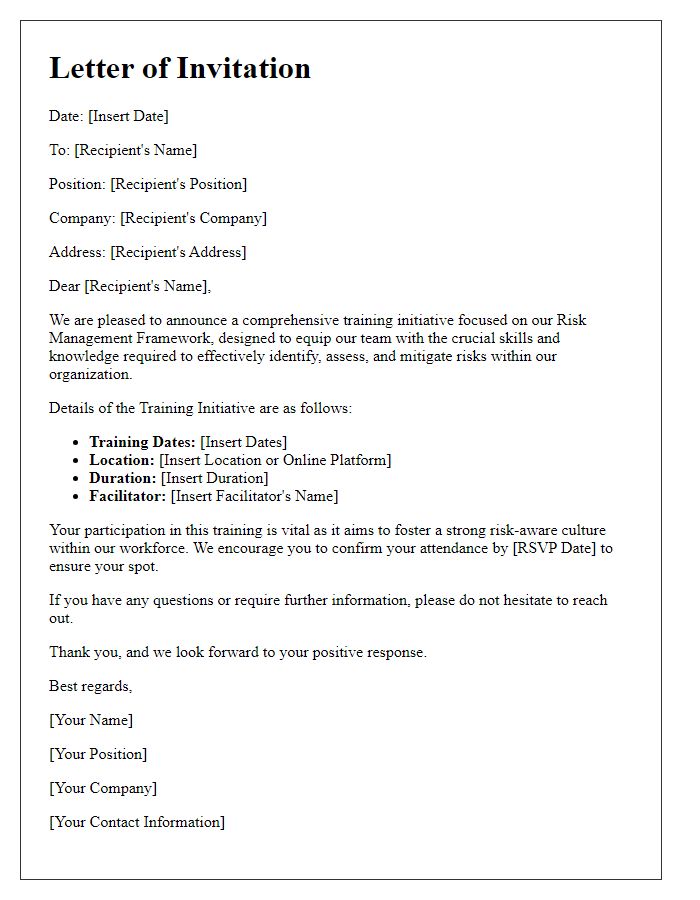Are you ready to dive into the world of risk management? In today's fast-paced business landscape, having a solid risk management framework is essential for navigating uncertainties and protecting your assets. This guide is crafted to help you understand the importance of risk assessment and mitigation strategies tailored to your organization. Let's explore the key components that will enable you to build a robust framework, and feel free to read on for more insights!

Purpose and Scope
The risk management framework serves as a strategic tool designed to identify, assess, and mitigate potential risks within organizations, enhancing operational resilience. This comprehensive framework encompasses various domains, including financial, operational, reputational, and compliance risks, creating a robust structure tailored to specific industry needs. The purpose of the framework is to establish a proactive risk culture, enabling organizations to anticipate challenges posed by external factors, such as market volatility or regulatory changes, while fostering an environment of continuous improvement and learning. Its scope extends to all organizational levels, supporting decision-making processes that align with strategic objectives and stakeholder expectations, ensuring that risk management becomes a fundamental aspect of organizational governance and accountability.
Key Objectives
The introduction of a risk management framework is essential for organizations seeking to identify, assess, and mitigate potential threats to their operations, financial stability, and reputation. Key objectives include the establishment of a comprehensive risk assessment process that evaluates both internal factors, such as organizational culture and resources, and external influences, including market trends and regulatory changes. By implementing standardized methodologies for risk evaluation, organizations can prioritize risks based on their potential impact (quantifiable in financial terms or operational disruption) and likelihood of occurrence. Furthermore, fostering a risk-aware culture within all levels of the organization is crucial, encouraging proactive engagement in risk management practices. Continuous monitoring and review mechanisms will ensure the framework remains relevant and effective, adapting to new challenges as they arise in an evolving business landscape.
Roles and Responsibilities
The implementation of a risk management framework is crucial for enhancing organizational resilience and decision-making processes. Roles such as Risk Manager, responsible for identifying and assessing potential risks (financial, operational, reputational), play a vital part in this framework. Stakeholders from different departments, including Finance and Compliance, are tasked with providing insights into specific risk factors unique to their functions. Senior Management oversees the integration of risk considerations into strategic planning, ensuring alignment with overall business objectives. Moreover, the Risk Committee, composed of key executives, reviews risk management policies and recommendations regularly, fostering a proactive culture of risk awareness throughout the organization.
Risk Assessment Process
Risk assessment is a critical component of the risk management framework within organizations, specifically focusing on identifying, analyzing, and evaluating risks that might hinder objectives. The process begins with comprehensive risk identification (the systematic examination to pinpoint potential risks) across various sectors (financial, operational, strategic), followed by a qualitative and quantitative analysis (the assessment of risk likelihood and impact using numerical data). The evaluation phase classifies risks into categories such as high, medium, or low based on established thresholds, enabling informed decision-making. Additionally, documenting findings in a risk register (a tool that lists potential risks and their assessments) provides transparency and facilitates ongoing monitoring. Regular reviews of the risk assessment process ensure that emerging risks (such as cyber threats or regulatory changes) are promptly identified and addressed, maintaining the organization's resilience and adaptability in a dynamic environment.
Monitoring and Reporting Protocols
The introduction of monitoring and reporting protocols within a risk management framework is vital for maintaining organizational integrity and operational compliance. These protocols, which may include quantitative metrics such as performance indicators and qualitative assessments, play a crucial role in identifying potential risks associated with various projects or processes. Regular monitoring, conducted on a weekly or monthly basis, ensures that any emerging issues, such as financial discrepancies or operational inefficiencies, are promptly addressed. Reporting mechanisms, including detailed risk assessment reports and dashboards, facilitate transparent communication among stakeholders, promoting accountability and informed decision-making. Effective implementation of these protocols can significantly enhance an organization's ability to mitigate risks, optimize resource allocation, and achieve strategic objectives in complex environments.













Comments